GUEST BLOGGER BUFFY SILVERMAN
Walk outside on a winter day, and you might think that there is little to see in nature. But when you take a closer look, you’ll find evidence of winter’s wonders. ON A FLAKE-FLYING DAY: WATCHING WINTER’S WONDERS highlights some of the ways that plants and animals survive a season of scarcity. Your students can observe these seasonal changes and use their observations to inspire their writing. In this blog post, you’ll find activities that culminate in students creating a mask poem (also called a persona poem) written from the point of view of an animal in winter.
Activity 1: Winter challenges
Ask your students to imagine what it would be like to be a bird or mammal living in the forest, field, or lake on a winter day. What challenges would they face? What strategies might they use to survive? Make a list of their answers.
After reading the main text of ON A FLAKE-FLYING DAY, ask students to recall some of the animals that they met in the book. What were those animals doing? Some answers might include: the skunk slept curled in a den; ladybugs huddled together for warmth; the weasel’s fur turned white as snow; the woodpecker tapped trees with its beak to find insects. Add the students’ answers to your initial list of animal strategies.
Ask students to choose one animal from the book that they would want to be in the winter. Explain to students that they can learn more about how that animal survives in the winter by reading the entry for it in the back matter of the book. Read the back matter entry for several of the animals that students selected.
Activity 2: Collecting winter words
Tell the students that you will be reading ON A FLAKE-FLYING DAY once again. Ask the student to remember one or two words that describe what animals are doing in the winter. Make a list of their winter words.
Take a wintery walk close to your school. Stop several times on the walk and ask students to use their senses to gather more winter words. Ask if they can spot animal tracks or other evidence of winter animals. What do they see that an animal might eat in winter? Ask your students to close their eyes and listen for 20 seconds. What sounds do they hear? What do they smell? How does winter feel to them? When you return to your classroom, encourage students to share words that describe what they saw, heard, smelled, and felt on their walk. Add the words to your winter word list.
Activity 3: Put on your animal mask!
Tell your students that they are going to tell a wintery story of the animal that they chose in Activity 1. Encourage them to first read the back matter entry for that animal or find facts online about how their chosen animal survives in the cold. Then challenge them to write a short poem from the viewpoint of their animal. Ask them to describe the world in winter as their animal experiences it. They will use “I” as if they are the animal in their poem. They might include some words from the class winter word list in their poem. If students need a prompt, offer the following:
I am a ________.
When snow falls, I ____________________________.
I see ____________ in winter.
I hear ___________ in winter.
And I feel ____________in winter.
When spring comes, I will ______________________.
Featured image credit: “Crow animal track on snow” by piropiro3 is licensed under CC BY 2.0.
Buffy Silverman is the author of more than ninety nonfiction books for children, featuring topics from Angel Sharks to Alligators, and Mars to Monster Trucks. Her recent book, On a Snow-Melting Day: Seeking Signs of Spring, received a star from Kirkus Reviews and was an NCTE 2021 Notable Poetry Book. A companion book, On a Gold-Blooming Day: Finding Fall Treasures, was a CLA/NCTE 2023 Notable Book in the Language Arts. She lives near a swampy lake in Michigan where she enjoys outdoor time with her dog, watching and photographing nature, and writing poetry. Visit her at www.buffysilverman.com or @BuffySilverman on Twitter and BlueSky.


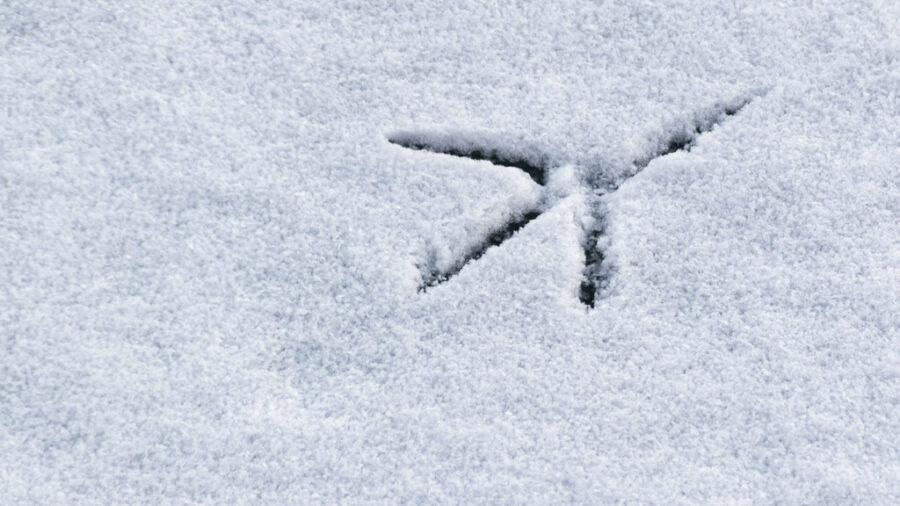


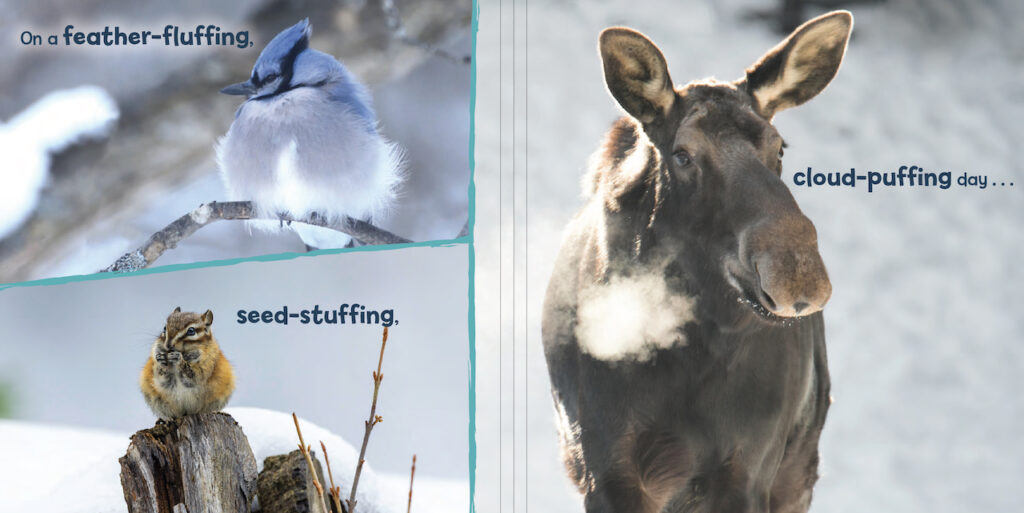
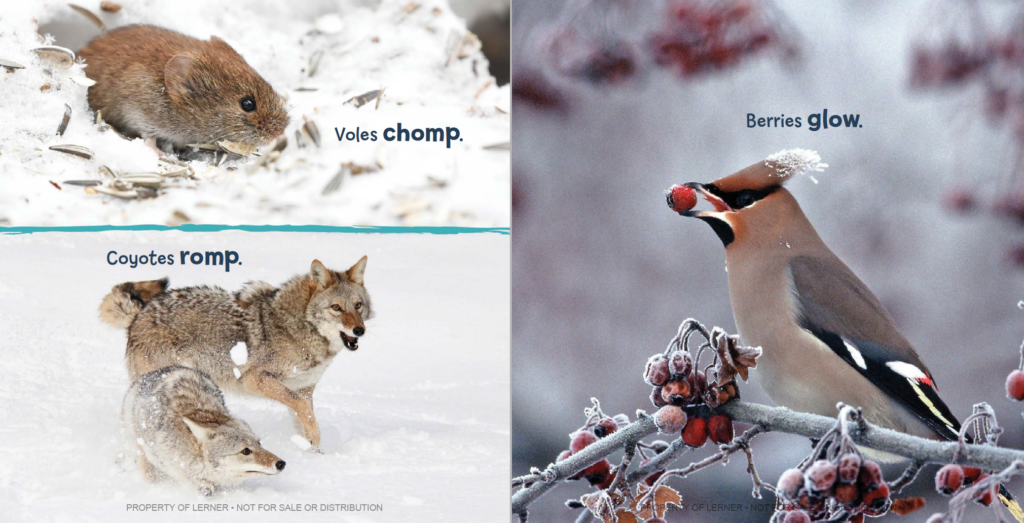
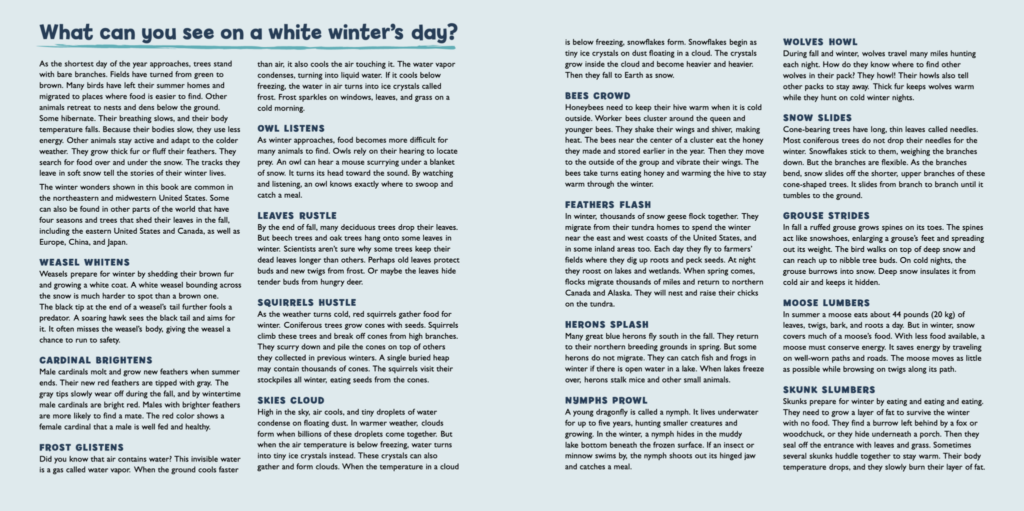


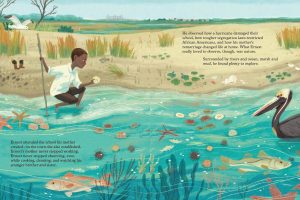



4 Comments
Leave your reply.